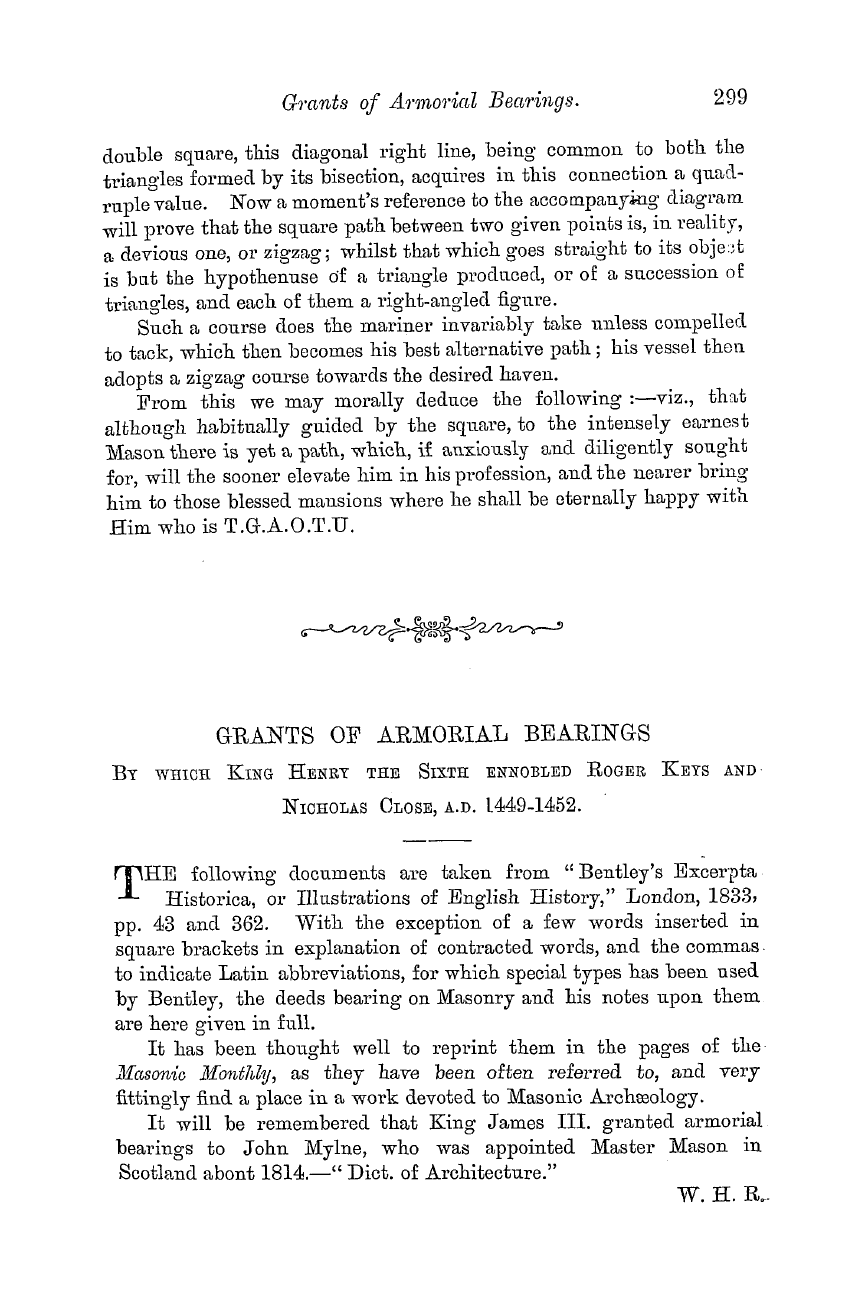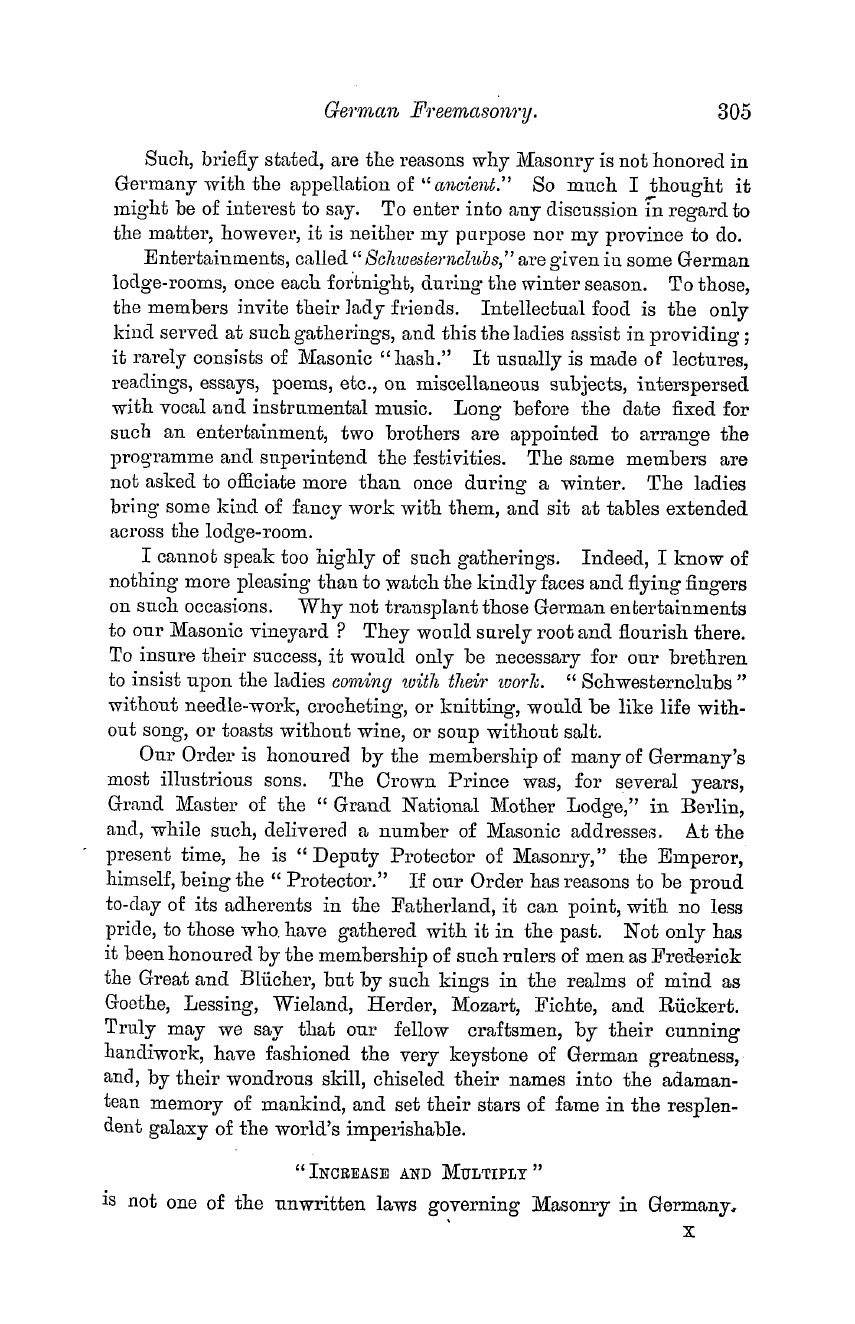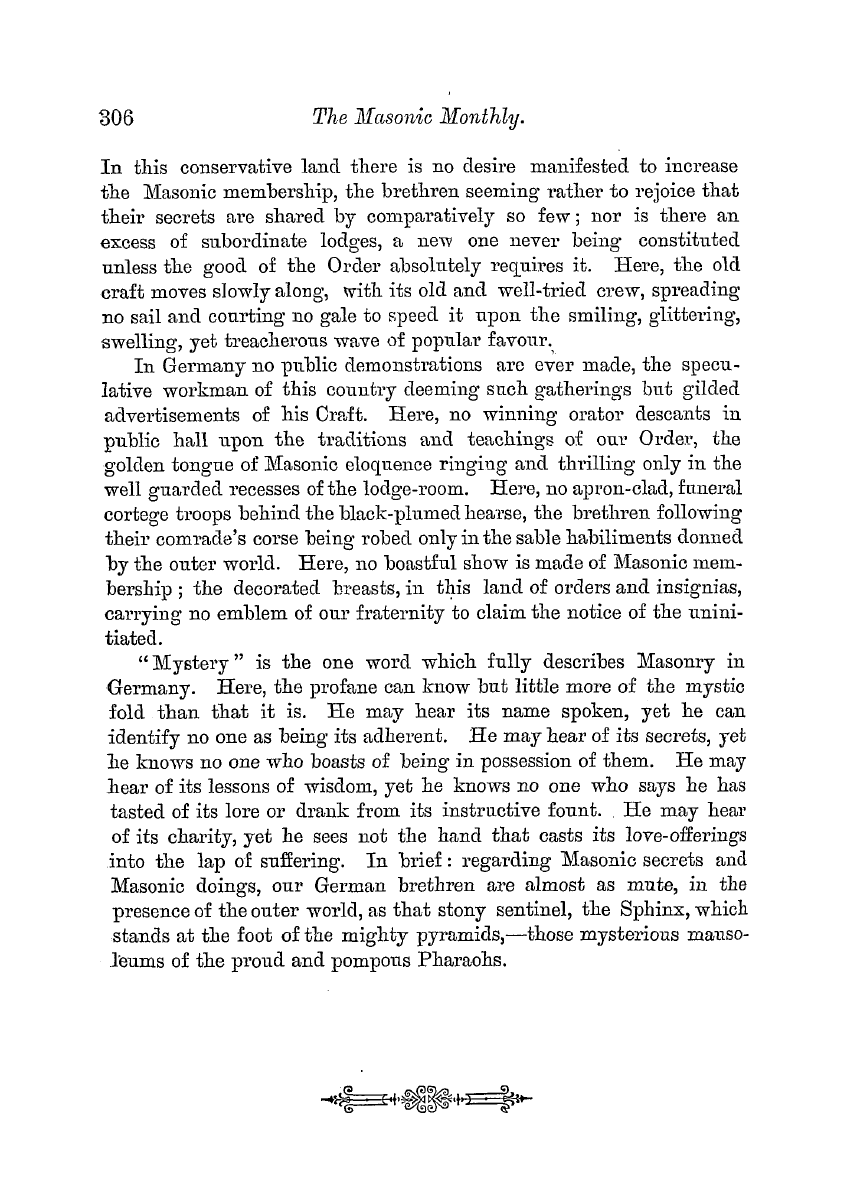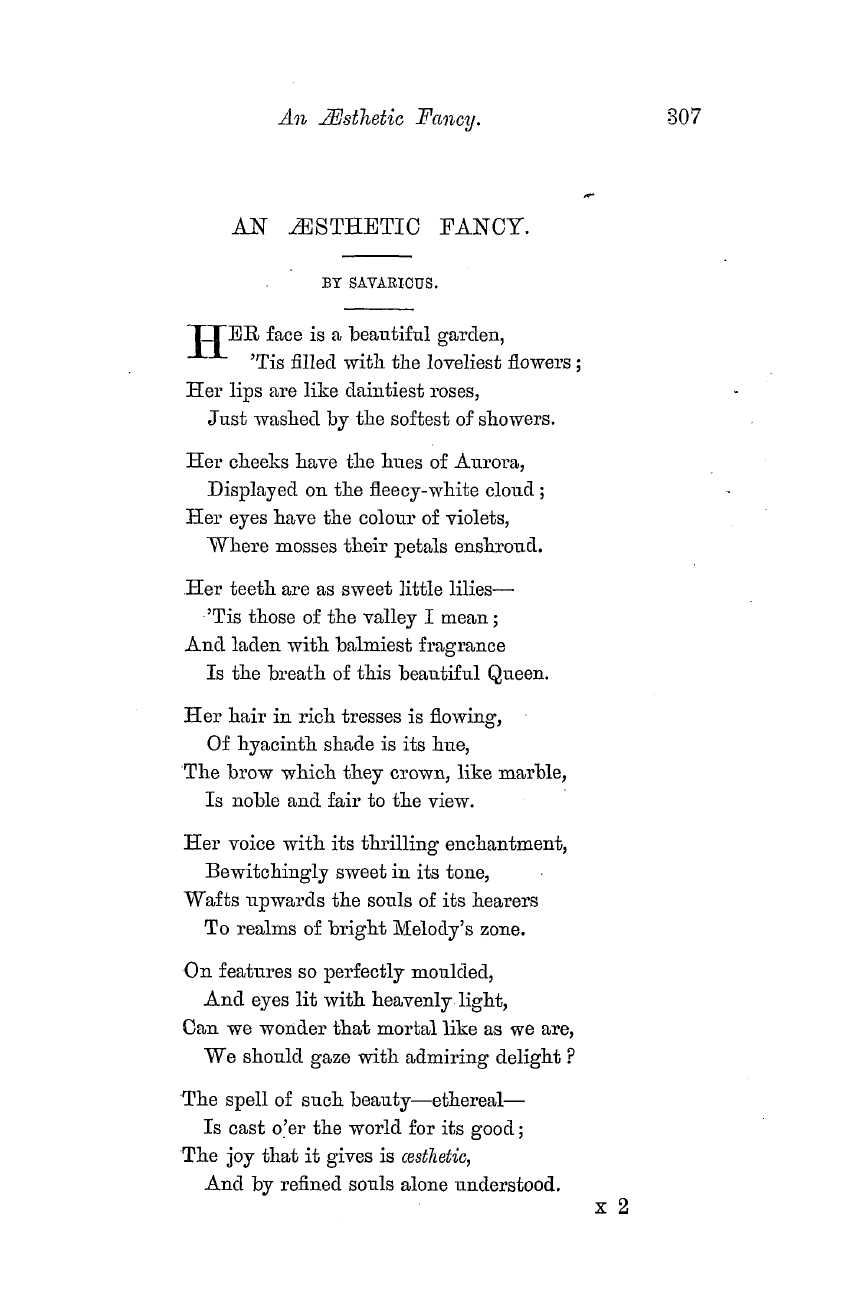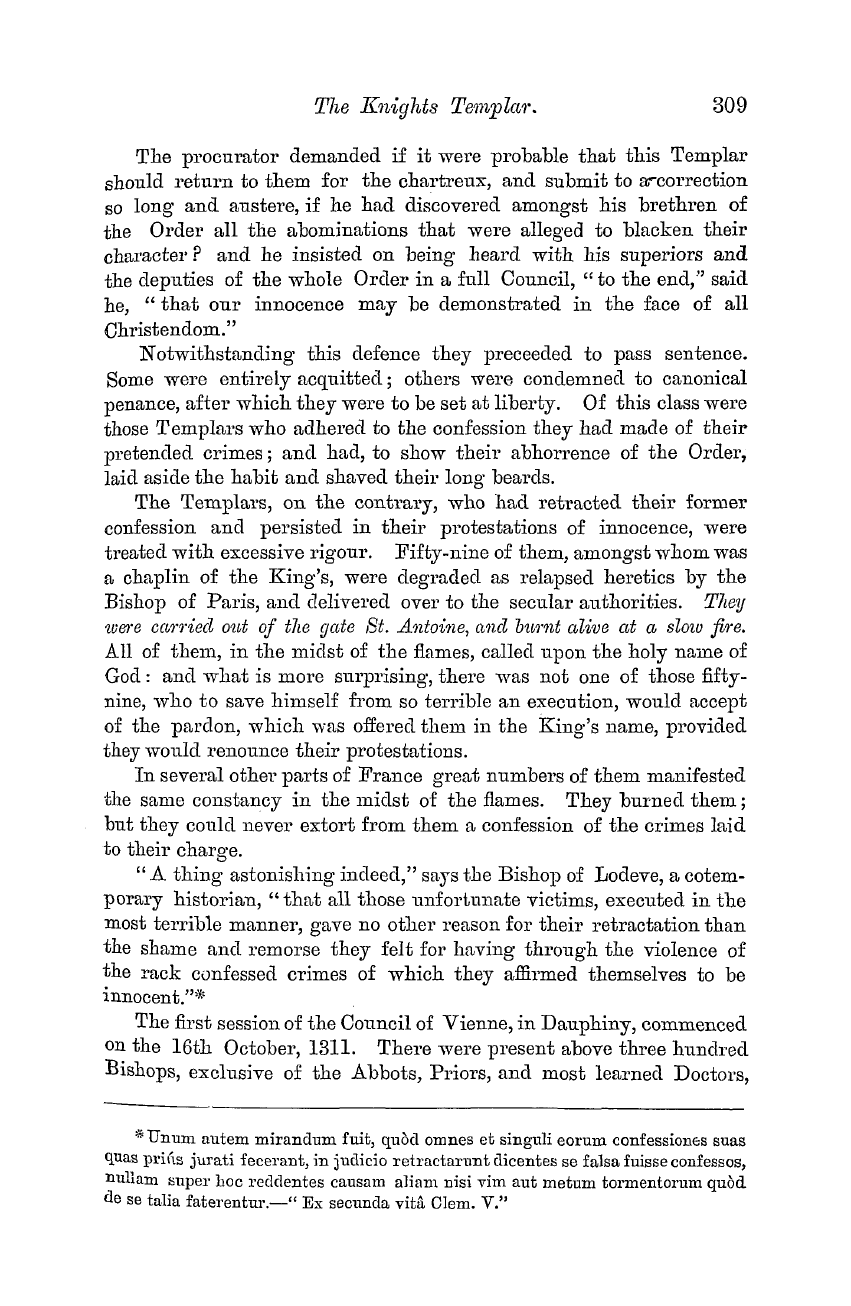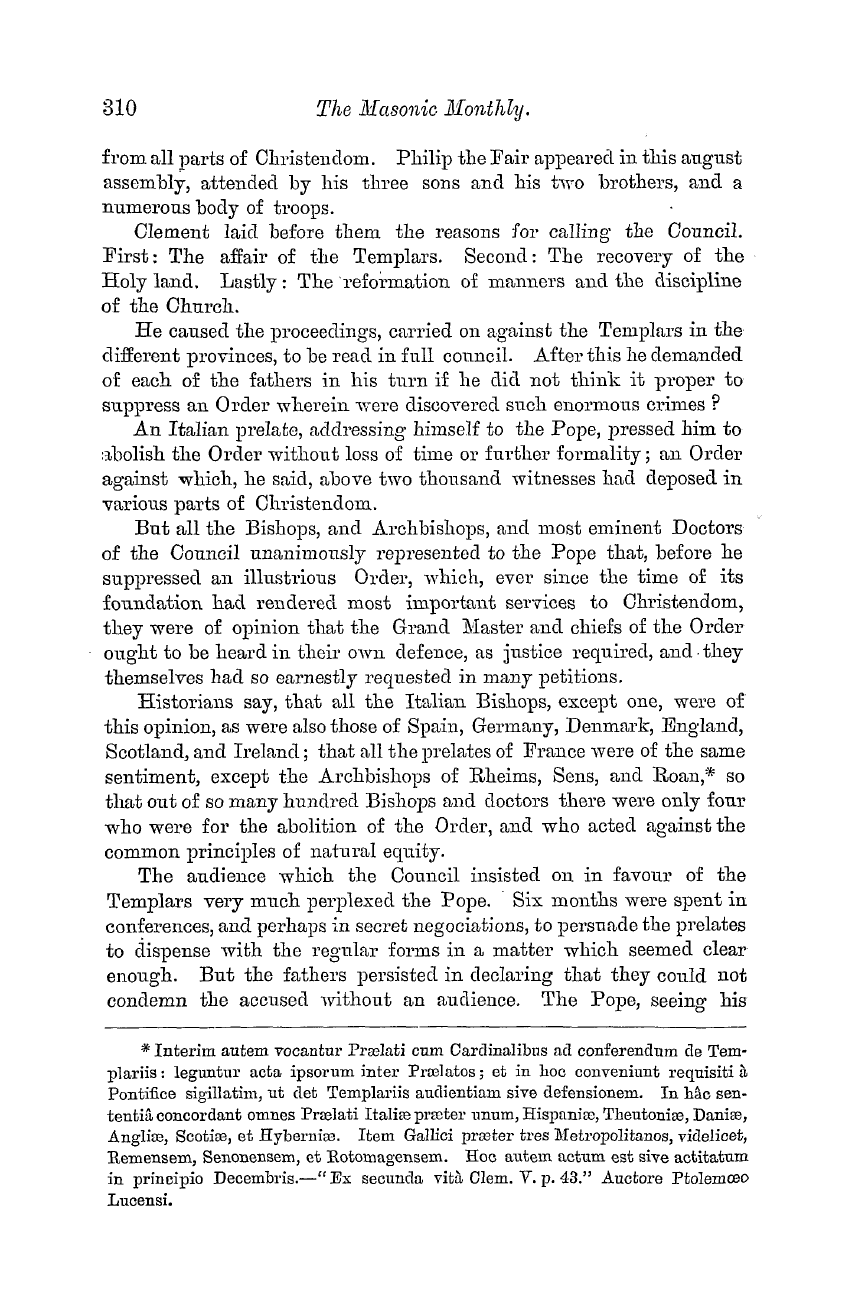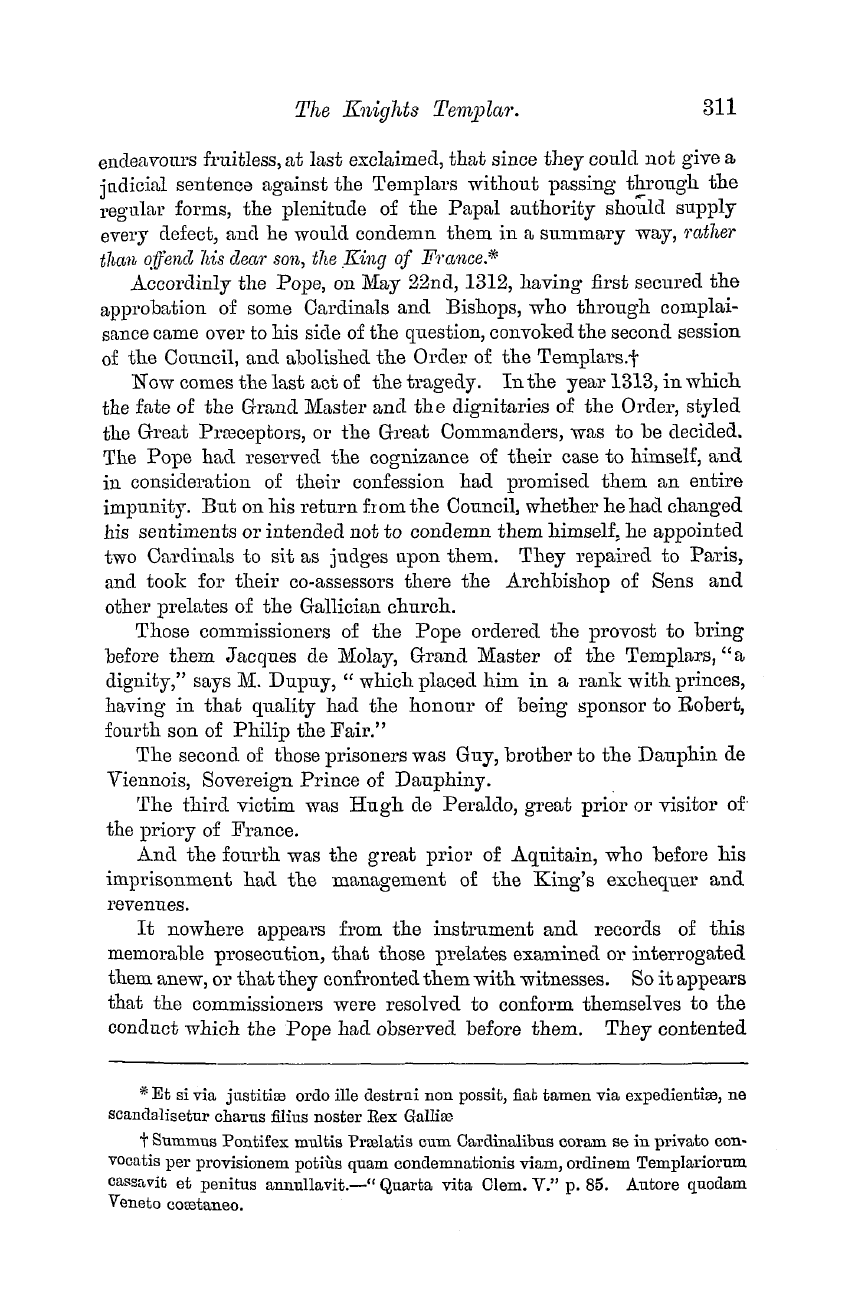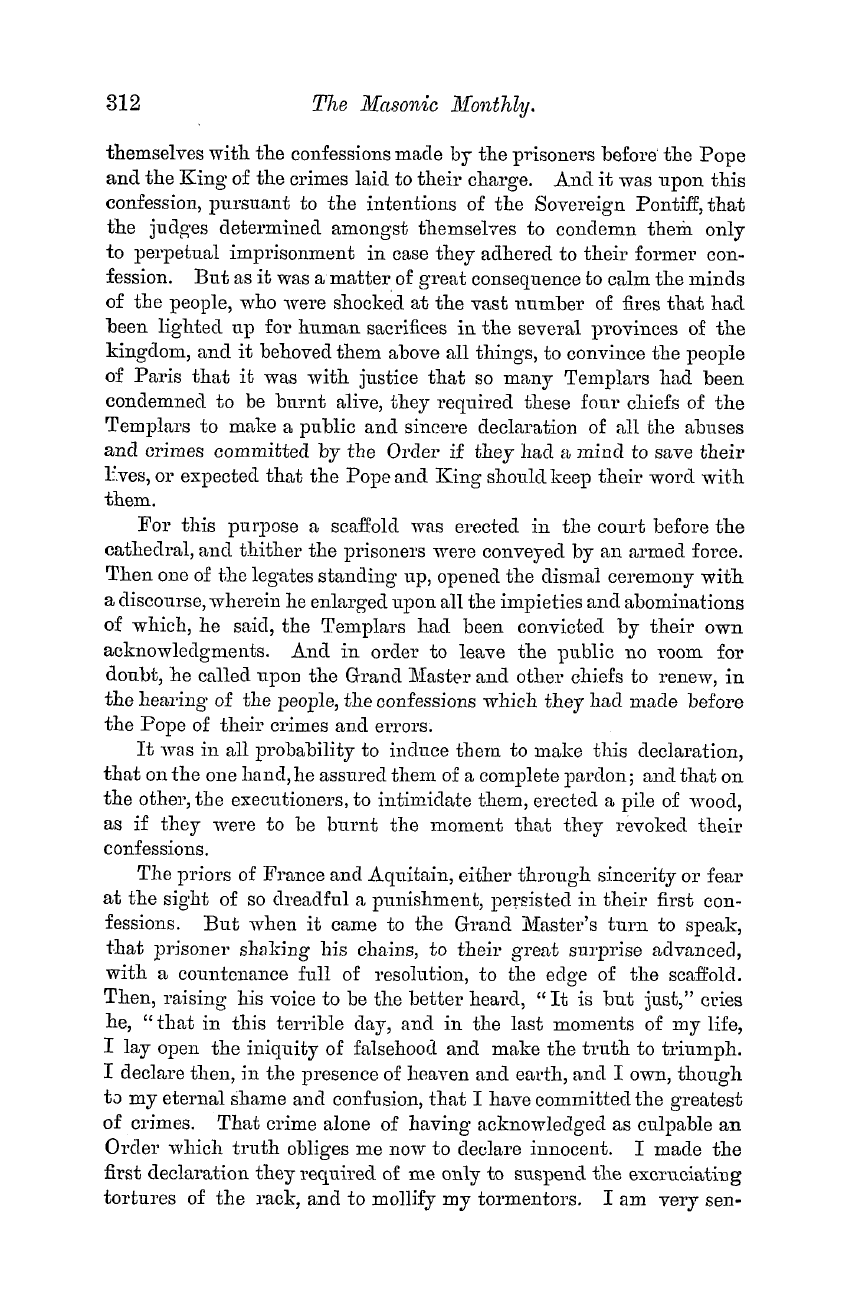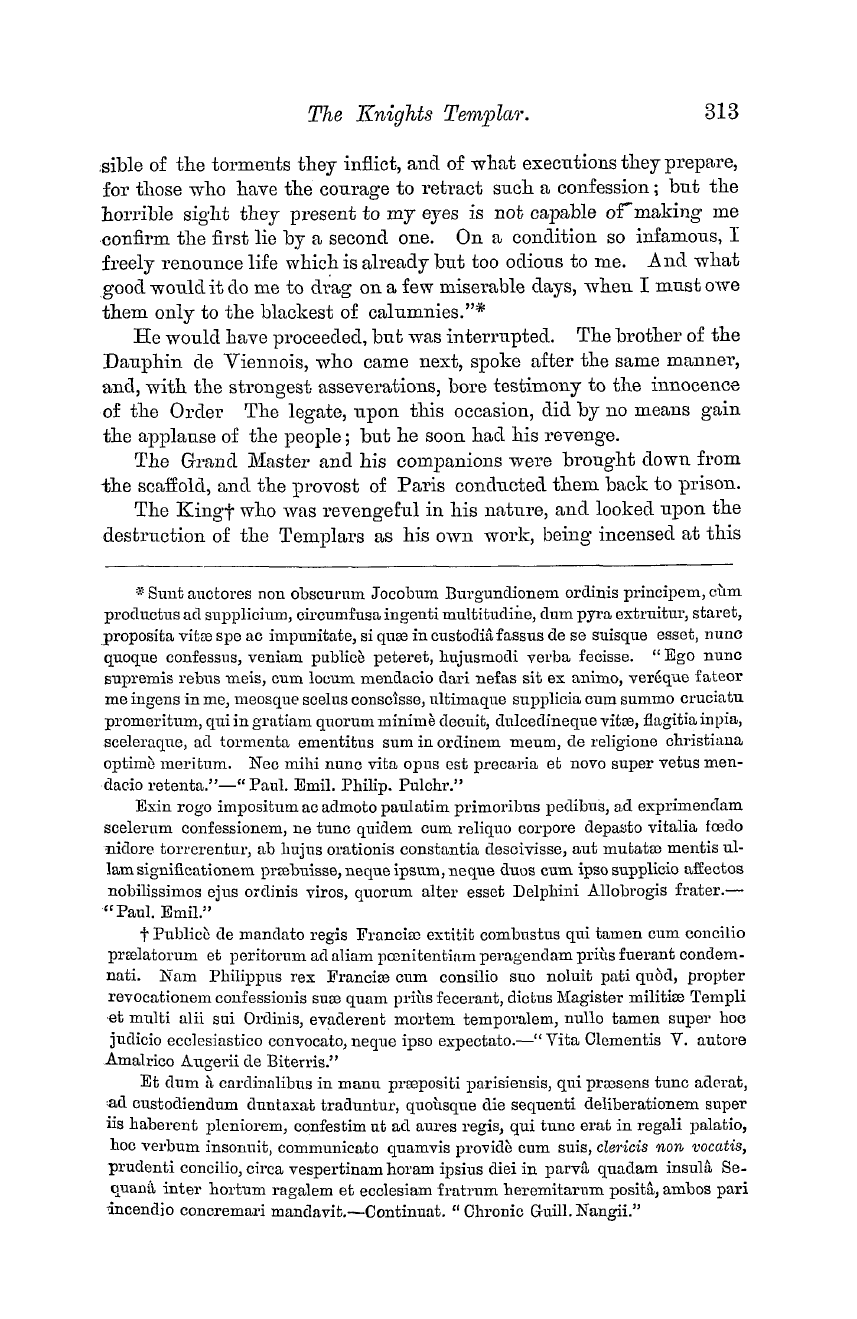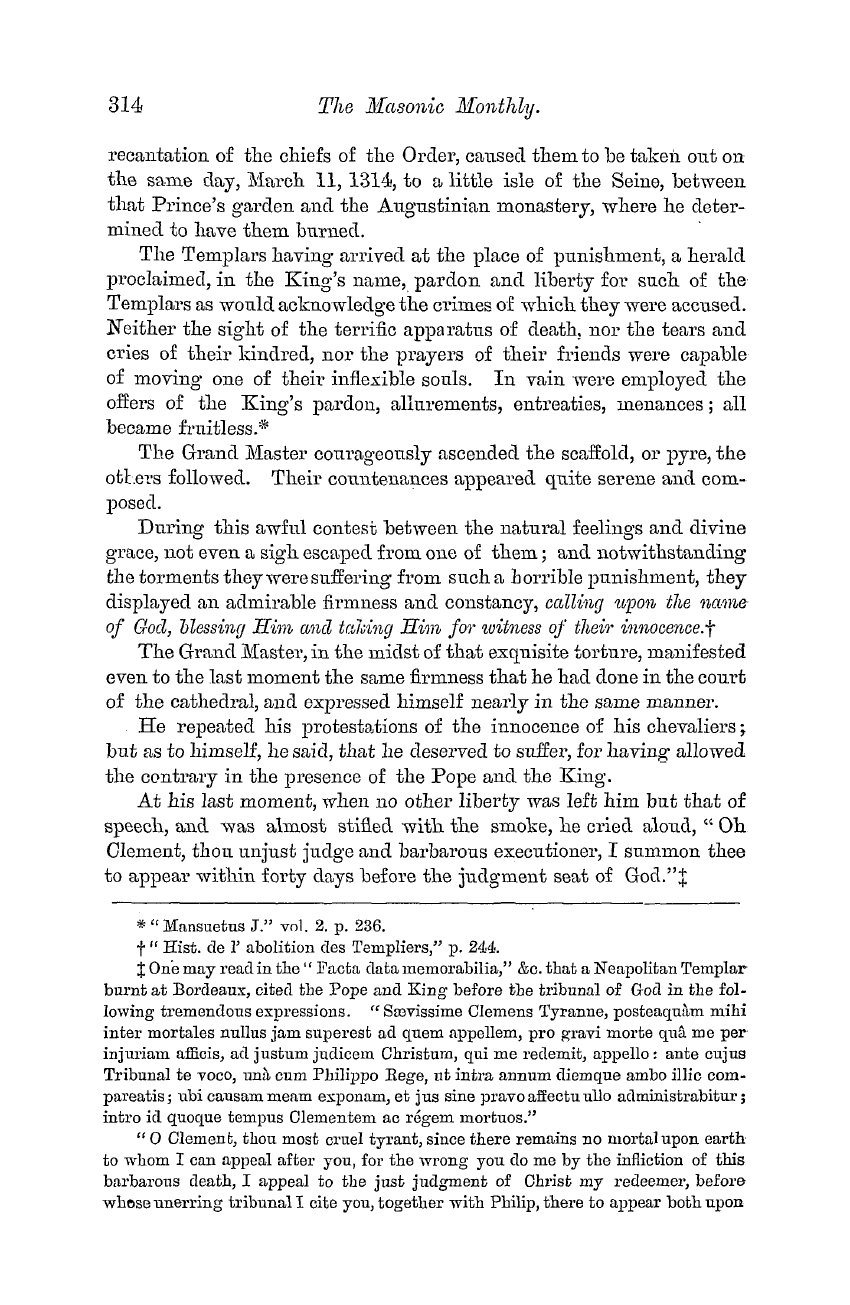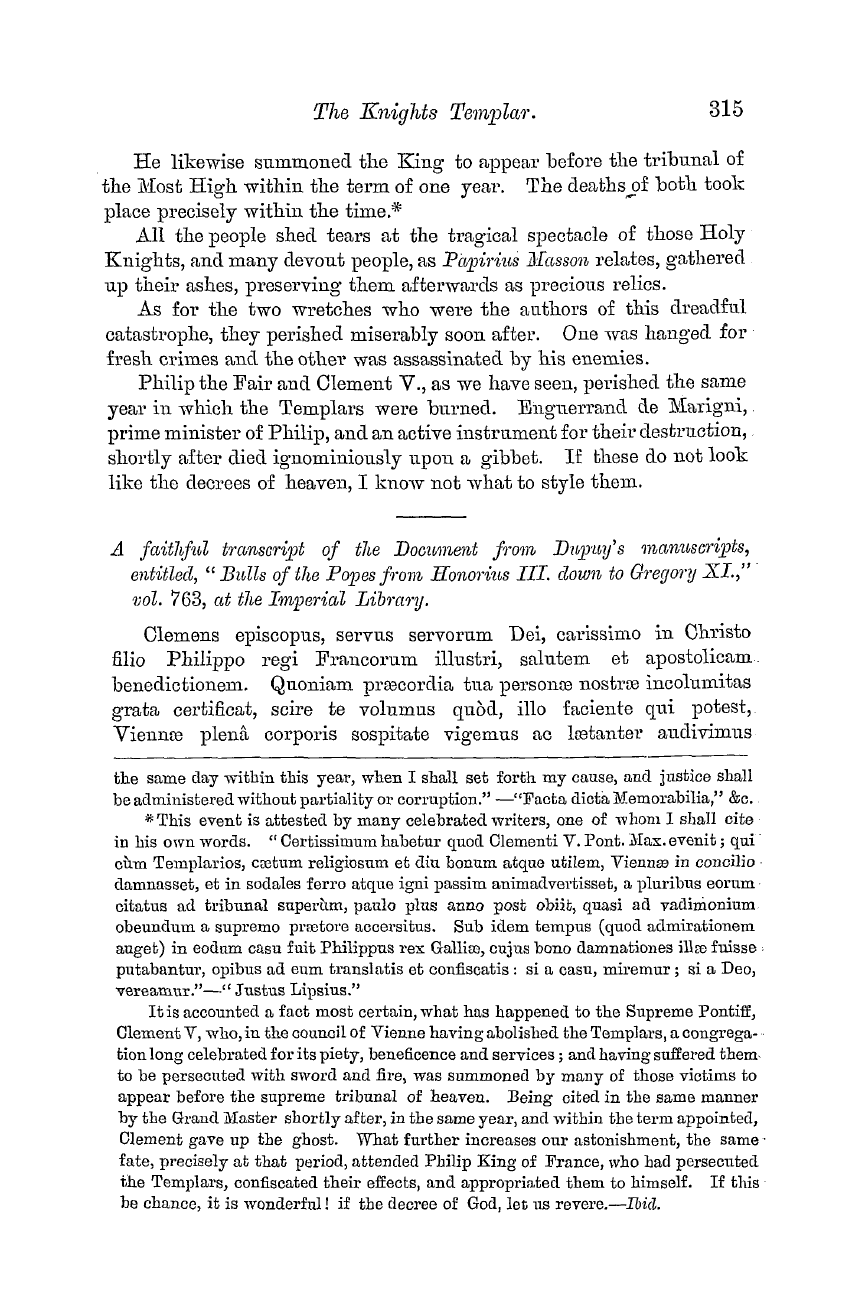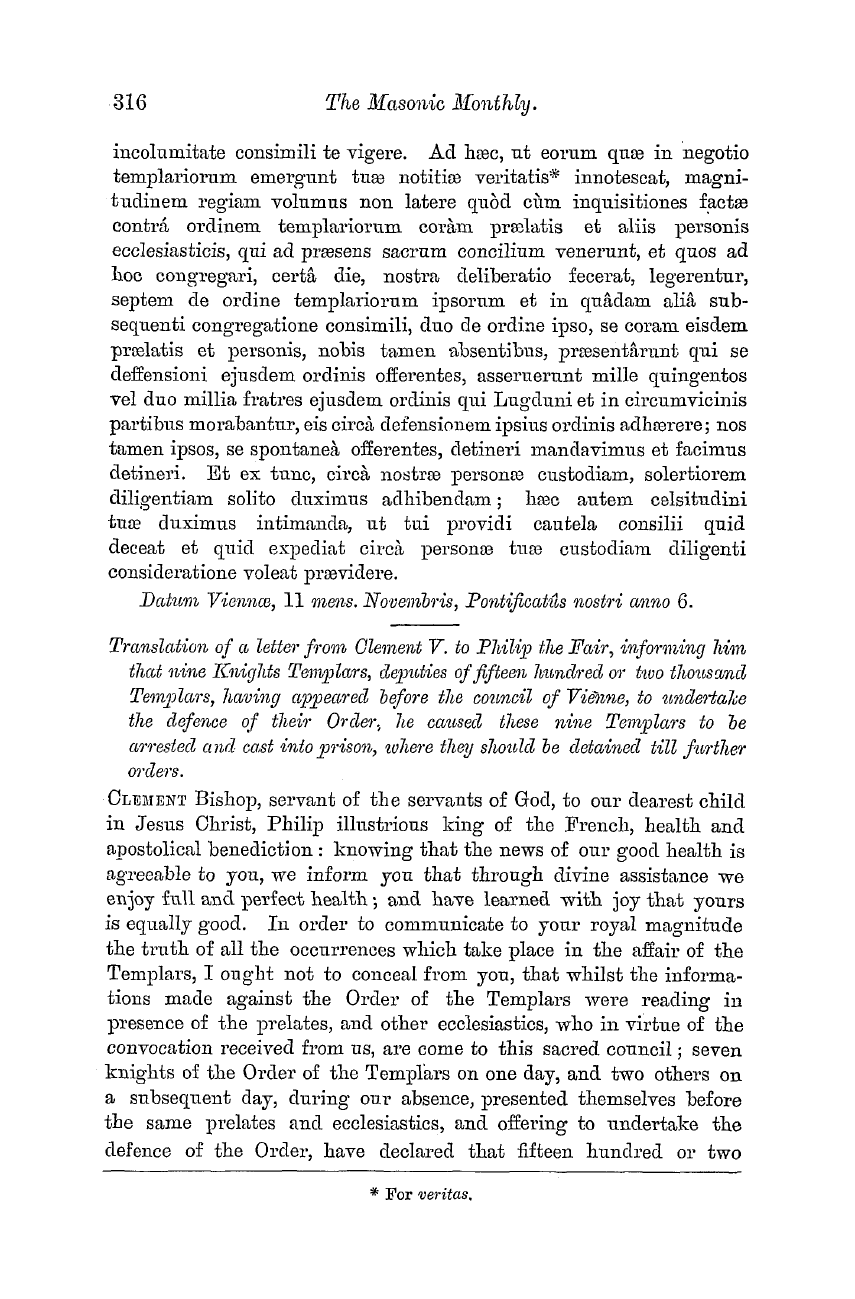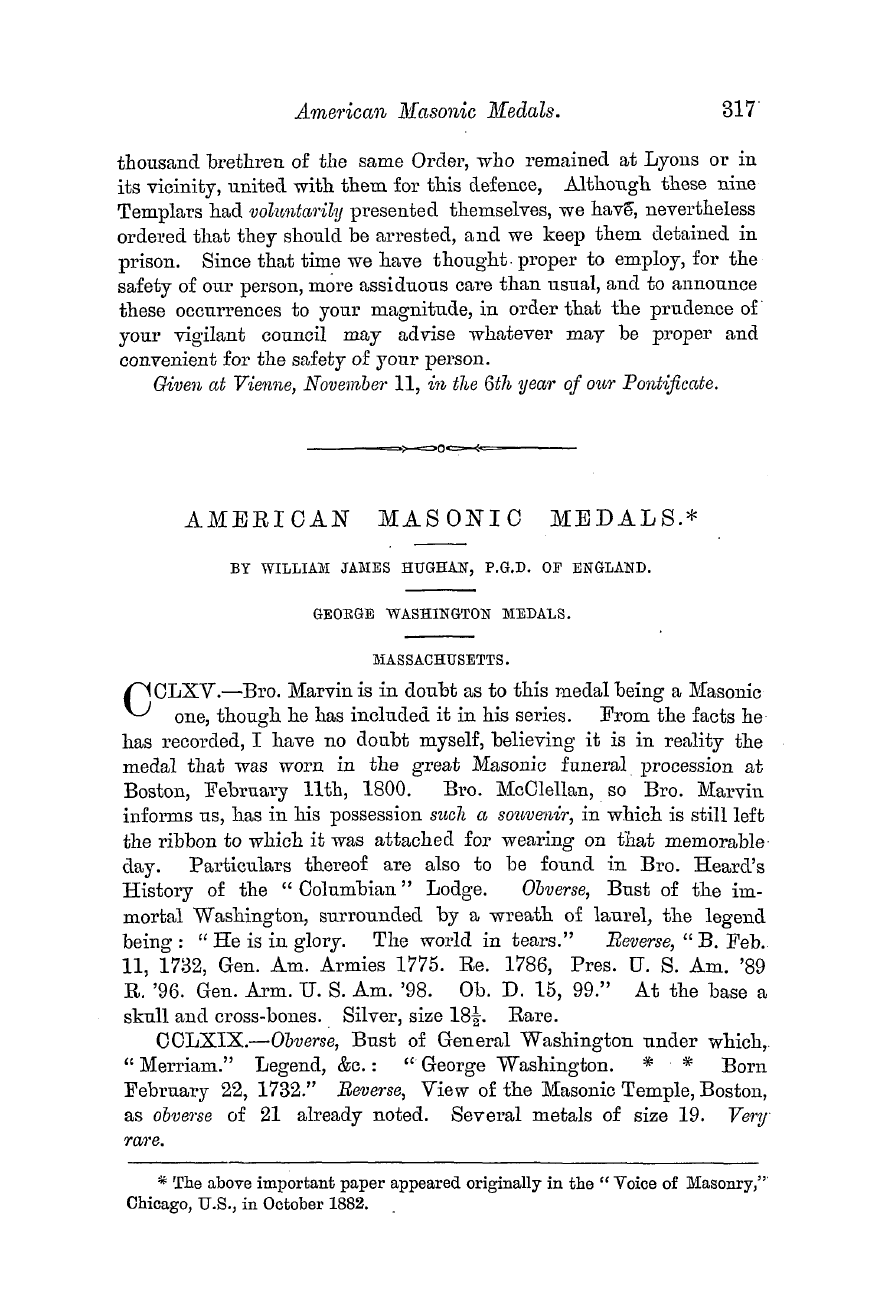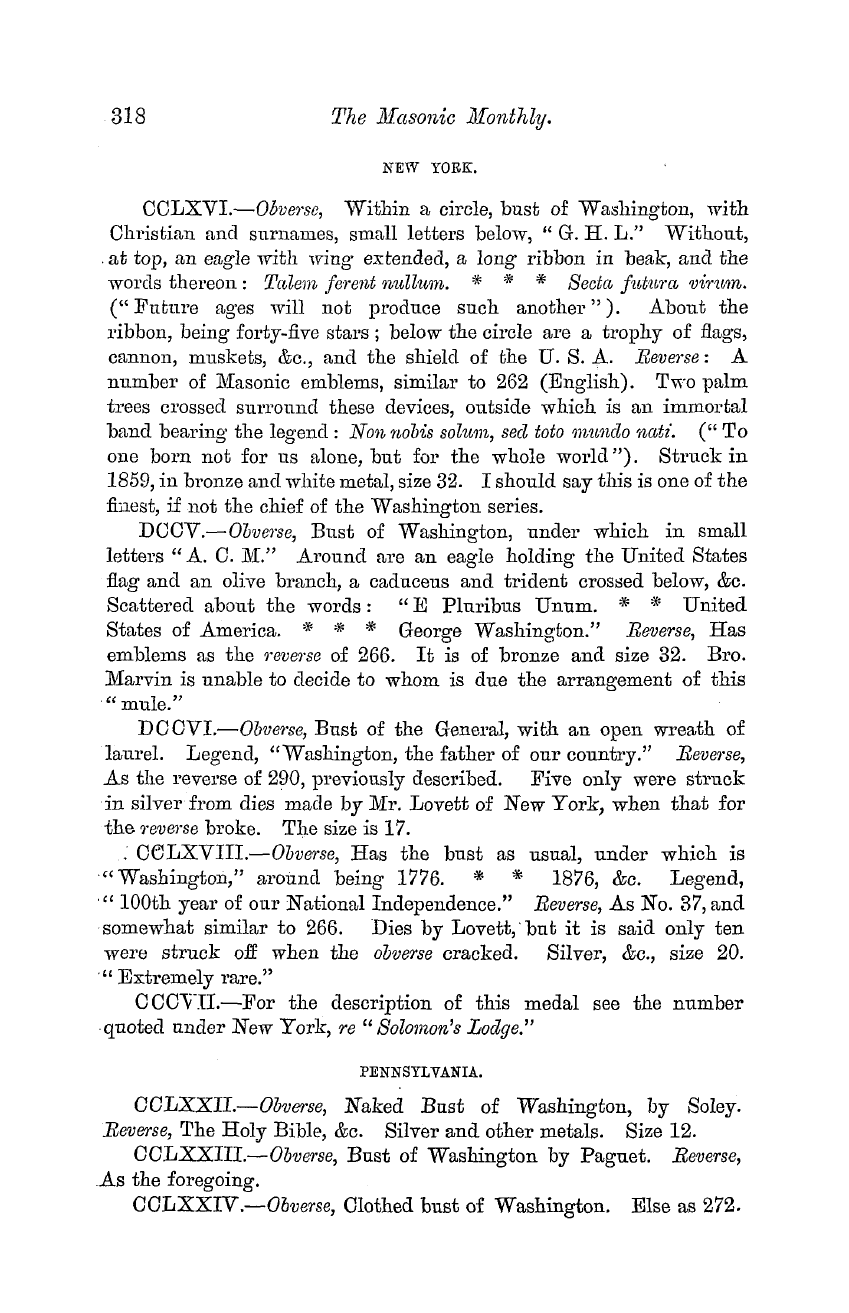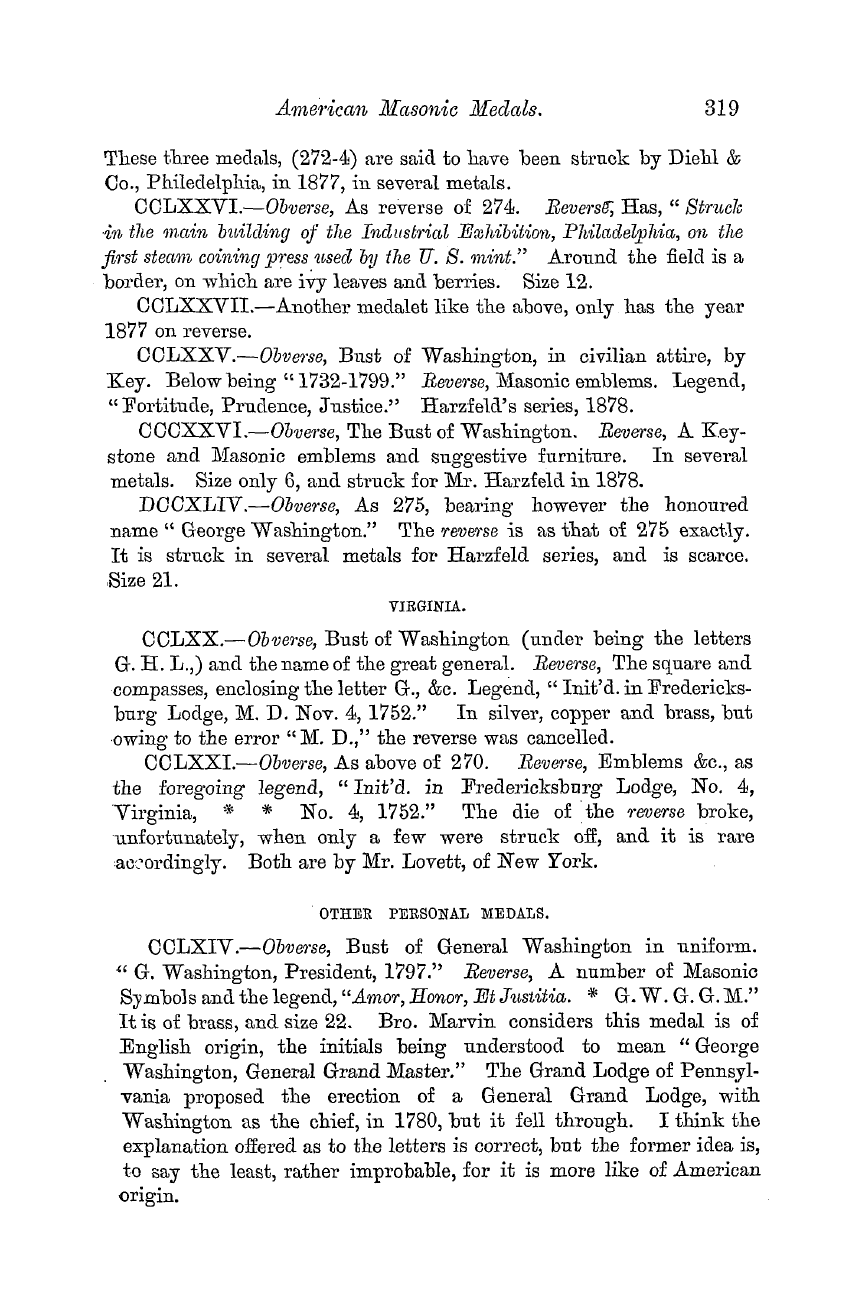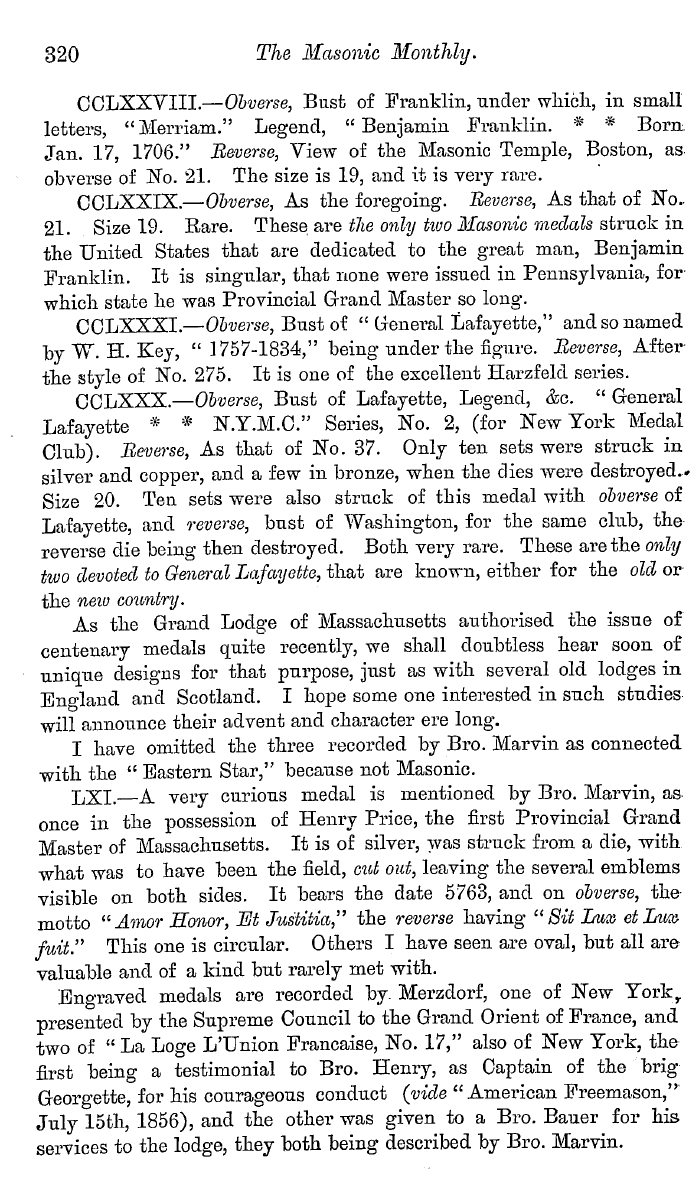Note: This text has been automatically extracted via Optical Character Recognition (OCR) software.
The Legend Of The Introduction Of Masons Into England.
was not surrounded with firm and substantial walls . " When Nottingham is attacked under similar circumstances , " the Christians were not able to throw down the wall . " * The Pagans erected fortifications in 871 , Nothing is however said of their composition , but in a few years is recorded one of the numerous conflicts between the Christians
and Pag'ans , and a little more explicit information is given . f In 878 , the castle of Cynuit , or Kynwith , on the river Taw , in Devonshire , is attacked by the Pagans , and it is stated that when they " perceived that this fortress Was altogether unprepared , and without fortifications , except such as were erected after our fashion , they did not attempt to assault it , because the situation of the place rendered it completely secure on all sides except the east , as we have ourselves seen it . "
These are the " walls in our fashion " already referred to . J In the same year King Alfred , " with a few attendants , formed a citadel in a place called Aethelingaeg , " i . e . Athelney . In 884 " the Pagans quickly erected a strong fortress before the gate" of Rochester . § These few references refer doutless to mere
earthworks ; but when Asser speaks of the character , etc ., of King Alfred , we learn a little more , although it is to be regretted that he , like the other chroniclers , is not very sj > ecific in his relations of those facts relating to building . "He taught , " we are informed , jj " all his goldsmiths and artizans , his falconers , hawkers , and dog-keepers ; according to a new jalan of his own he built houses more majestic and costly than was customary in the time of his ancestors . "
Again ,-fl" "he sent ambassadors beyond the sea to Gaul to procure instructors , and he invited over Grimbald , priest and monk , a venerable man and an excellent singer , very learned in all kinds of ecclesiastical discipline , and in Holy Scriptuz-e , and a pattern of all good manners . John also came over , a priest and monk , a man of
very acute intellect , skilled in all the discipline of all true scholarship , and in many other arts besides . " Of Grymbold ** it is said that he intended his remains should be laid after his death " in a vault built under the chancel of the church of St . Peter ' s , at Oxford ; for Grymbold had built this church from
its foundation of stone , polished with the greatest care . " King Alfredff "handsomely rebuilt London , and made it habitable ; " and Asser thus goes into raptures over his other works of bnikl-- ^ g : ++ "What shall I say also of the cities and towns which he restored , and of othez's which he built where none had existence before ? Of
Note: This text has been automatically extracted via Optical Character Recognition (OCR) software.
The Legend Of The Introduction Of Masons Into England.
was not surrounded with firm and substantial walls . " When Nottingham is attacked under similar circumstances , " the Christians were not able to throw down the wall . " * The Pagans erected fortifications in 871 , Nothing is however said of their composition , but in a few years is recorded one of the numerous conflicts between the Christians
and Pag'ans , and a little more explicit information is given . f In 878 , the castle of Cynuit , or Kynwith , on the river Taw , in Devonshire , is attacked by the Pagans , and it is stated that when they " perceived that this fortress Was altogether unprepared , and without fortifications , except such as were erected after our fashion , they did not attempt to assault it , because the situation of the place rendered it completely secure on all sides except the east , as we have ourselves seen it . "
These are the " walls in our fashion " already referred to . J In the same year King Alfred , " with a few attendants , formed a citadel in a place called Aethelingaeg , " i . e . Athelney . In 884 " the Pagans quickly erected a strong fortress before the gate" of Rochester . § These few references refer doutless to mere
earthworks ; but when Asser speaks of the character , etc ., of King Alfred , we learn a little more , although it is to be regretted that he , like the other chroniclers , is not very sj > ecific in his relations of those facts relating to building . "He taught , " we are informed , jj " all his goldsmiths and artizans , his falconers , hawkers , and dog-keepers ; according to a new jalan of his own he built houses more majestic and costly than was customary in the time of his ancestors . "
Again ,-fl" "he sent ambassadors beyond the sea to Gaul to procure instructors , and he invited over Grimbald , priest and monk , a venerable man and an excellent singer , very learned in all kinds of ecclesiastical discipline , and in Holy Scriptuz-e , and a pattern of all good manners . John also came over , a priest and monk , a man of
very acute intellect , skilled in all the discipline of all true scholarship , and in many other arts besides . " Of Grymbold ** it is said that he intended his remains should be laid after his death " in a vault built under the chancel of the church of St . Peter ' s , at Oxford ; for Grymbold had built this church from
its foundation of stone , polished with the greatest care . " King Alfredff "handsomely rebuilt London , and made it habitable ; " and Asser thus goes into raptures over his other works of bnikl-- ^ g : ++ "What shall I say also of the cities and towns which he restored , and of othez's which he built where none had existence before ? Of










































